New Classical Portraits by Barbara Hangan
Barbara grew up in a family of accomplished artists and so has been exploring art from a very young age. Barbara has since developed an astounding style of her own which has made her artwork unique and well-known — dark backgrounds, fine details with layers and varnishes, with a sophisticated mixture of self-expression and interpretation. Whatever the theme, Barbara uses superb artistic techniques to give life to her subjects, making them stand out and leaving the viewer with a strong impression. Her ″contemporary classical″ art is a form of eternal beauty. Recently, I was able to interview her. I hope our readers can get a sense of her and her paintings.
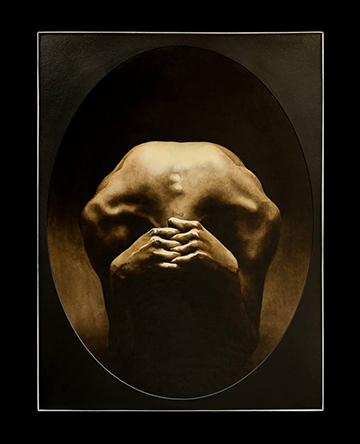
Q: Your paintings are absolutely astounding. Every piece is unique and a collector′s delight. It appears you have a very strong classical art training. Please share with us your training; when and why you started learning painting.
A: Thank you so much! I love sharing my art with people who truly understand it as a daily source of enjoyment. This is how I think of it… a conversation starter, a piece of food for thought.
I was drawn towards painting from a tender age… it was what I′ve always felt I could and would do. Being born and raised in a family with many artists, I have been actively encouraged and supported to follow my calling. I′ve also had proper artistic training: I went to the classes of the local Art School, ″Romul Ladea″ here in Cluj [in Romania], and later on to the Academy of Fine Arts. I was also active in different art clubs and did many art activities for children while growing up.
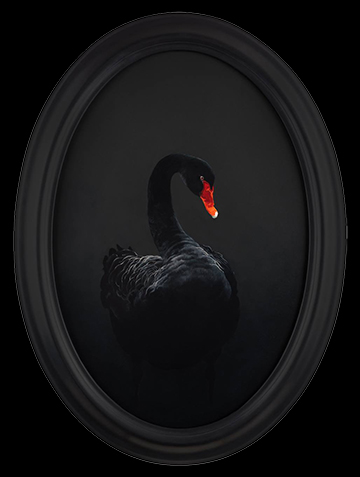
Q: Please tell us why you tend to paint the background black. Is it about contrasting, expression of feeling, or making a statement?
A: The dark background is something I absolutely love! It′s all about contrast, shadow and light. Actually, I discovered that the character or the object of my attention in the work absorbs more light if its background is kind of black or really really dark. Actually, although most of the time the background looks black, it rarely is… I use very dark shades of indigo, China green, plum violet, Van Dijk brown.
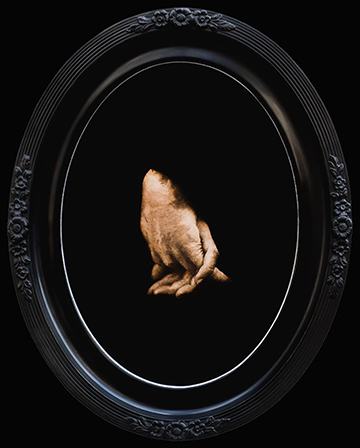
Q: How have you transformed from classical art to your own style? What has influenced you to make that transition?
A: I think the process went the other way around. After finishing my art training, I started to explore different themes and techniques, mostly portraits and feminine characters and distilled all of it into a distinct style. In time, this style became more and more classical, but happened gradually and as a natural evolution, I did not necessarily plan for it. I think I am addicted to new, to reinventing myself, to discover uncharted territories.
Q: What is your preferred medium? What is your preferred subject, person, animal and why?
A: As I said, I love to explore… I tried every medium and then I mixed them all. Currently, I use only oil paints and an old Flemish painting technique. I prefer them for their richness and texture. As for my favorite subject, it is always the subject I have on my easel. The subject I am painting at the moment.
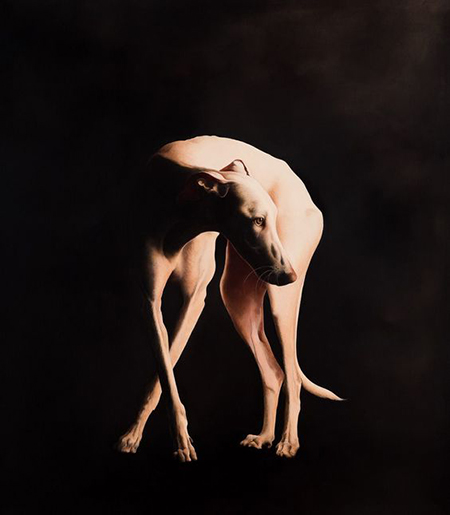
Q: What are your sources of inspiration? Under what conditions do you feel compelled to paint — feeling, reflection, observation?
A: All of them 🙂 I draw inspiration from all the beautiful things that life throws my way… from a beautiful song I listen to, to a perfume, an image, a book. You know how artists are… for a painter everything turns into paintings, for a songwriter everything turns into music… I just pay attention to the world around me and whatever makes my heart beat faster… becomes my inspiration.
Q: How long do you spend on one painting and at what point you are satisfied with your work?
A: It depends on the light, my mood, the size, the difficulty. It can be anywhere between 50 and 200 hours. I could say I am satisfied only when the work is the closest to the image I have in my mind. One thing I′ve learned in time is that a painting is never done. You just decide when it′s time to stop and move to the next.
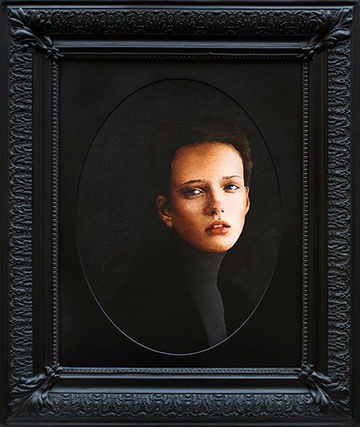
Q: Please tell us your ″Butterfly Effect″ series, the motif, theme and matching vintage frames.
A: ″The Butterfly Effect″ is a collection of characters inspired by the chaos theory. Even though the entire series looks like a portrait collection, I consider it to be a collection of untold stories. Every painting is matched with a vintage frame chosen specifically for the respective painting and painstakingly restored.
Q: Please share with us the techniques you use in developing a distinctive style of your own which combines the old with the new to make a bold and vivid presentation. Has any classical or contemporary artist influenced you?
A: I was influenced in the past by the elegance and grace of the Secession movement and artists and later on by Johannes Vermeer and Michelangelo Merisi da Caravaggio. I don′t really feel the need to be influenced by my contemporaries, but I surely love to find beautiful contemporary art to admire. My latest discoveries are Jeremy Geddes, Daniel Bilmes and Lo Chan Peng.
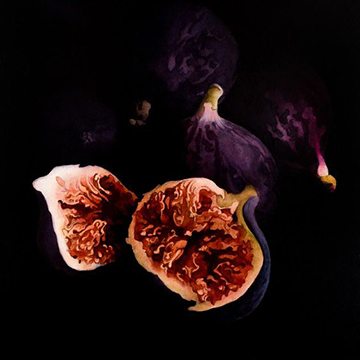
Q: When and where is your next exhibition so people can view your art? Also, can people purchase your art online?
A: Most of my exhibitions so far have been in my home country [of Romania] and in Europe. I have quite a club of collectors who are usually buying my paintings directly from the easel, so I have to make an effort to keep a set of paintings together for an exhibition… But on occasion, I manage to do that… I don′t sell my paintings online per se… I don′t paint very many pieces every year so there is no question of ″volume″. People write to me on social media or on my email address, some even want to come over and visit my studio… it depends. But with most I have direct communication and, to my delight, in time, some of them have become dear friends. At the end of 2019 I will release a high-quality print collection on my website, so more art lovers can enjoy my work.
We thank Barbara for her time sharing with us her journey as an artist who has developed her own style and refined the portrait in a classical way. I look forward to seeing more paintings from her that can be passed on from generation to generation.
View Barbara′s Website